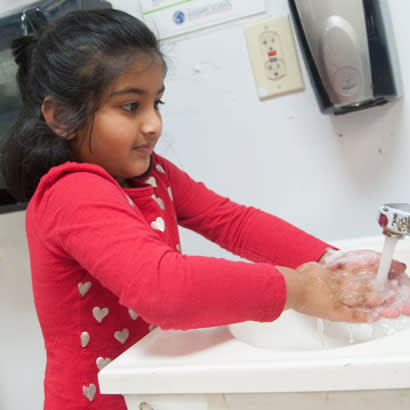
This blog post was originally featured on Afterschool Alliance’s blog, Afternoon Snack.
Earlier this month, Jen Siaca and Alison Overseth wrote a great piece in the Hechinger Report on 5 things afterschool programs need to be thinking about as we look toward fall. We wholeheartedly agree and have a few more big ideas to add to the list — starting with an immediate call to action — and some challenges for us to address that can help put afterschool in a strong position to help youth, families, and schools during re-opening.
Take Action
- Reach out to your school and district leaders to talk about the role you are willing to play to support them and students in re-opening; Schools share many of the same concerns we do around social and emotional support; learning loss; and children needing supervision, meals and support on days outside of school. We need to let them know we want to be part of the team to help youth recover and re-engage.
- Contact Congress and your local policymakers to make sure they know afterschool programs are key to recovery but can’t help without additional funds for smaller staff ratios, expanded hours, & PPE, and access to additional space.
Prepare For:
Flexible, expanded schedules: As states begin to share guidance and ideas for schools to reopen, many call for staggered schedules to limit how many youths are in school at a time. Families will need supervised, engaging programs for children on remote learning days in addition to after-school hours. While schools are focused now on their own logistics, they will feel pressure to help parents who cannot be home when students aren’t in school, and to make sure remote learners have a space to log on. We’ve already seen what this might look like in Missouri, where a 21st Century Community Learning Center (21stCCLC)program in Missouri re-opened in conjunction with their school district summer school to offer full day programming on a split schedule so that half of the students are doing enrichment with afterschool staff in the morning while the other half is with classroom teachers doing their summer school classes. They then switch during the afternoon. So, where the 21st CCLC program normally serves 350 students daily before and after school, they are serving 750+ until the end of June.
Alternate space and facilities: We’ve got to prepare for the possibility that schools may be closed to afterschool providers. If you have access to other facilities, this could be a great asset to bring up to local school leaders as you seek to partner with them on re-opening plans. If you usually operate in schools, think about how you might access other spaces or facilities. Think about libraries, parks, community centers, cultural or performing arts centers that may have under-used spaces. Talk to local city or county leaders about ideas. In Lincoln, Nebraska, afterschool providers are providing in-person care at churches and community centers in the area of the schools.
Staffing considerations: Programs will likely need to sustain staff ratios of 10-1 per health guidelines; prepare for the possibility that some staff may not be able or comfortable working tin the same capacity; and be ready for continued, or resumption of, virtual programming.
“Doubling down on social-emotional learning (SEL)”: The social and emotional needs of children have never been greater; make sure you are prepared to help students re-engage and re-connect, to when youth need additional mental health support, and have a plan for connecting youth to that additional support. The American Institute for Research released a new brief, Recognizing the Role of Afterschool and Summer Programs in Reopening and Rebuilding.
Enhancing academic support/enrichment: With estimates that students will experience more than a 50 percent learning loss this year, it is more important than ever to work with schools to complement school day lessons, open lines of communication with teachers to help identify youth who need extra help and shape your homework help, tutoring and enrichment activities to their needs. For instance, establish regular meetings between the afterschool program director and principals, assign staff members the responsibility of managing and maintaining communication, and host joint professional development opportunities for both school day staff and afterschool program staff.
This year, out-of-school time programs will be relied on more than ever to support continued learning, build social connections, provide nutritious snacks and meals, get kids moving, and address the trauma and mental health challenges from COVID-19. The Afterschool Alliance has great resources available to guide you through building and strengthening a partnership with your local school district and determining how best to leverage your out-of-school time programs for different return to school scenarios including in-person, hybrid models, or all virtual learning. NRPA will be sharing more information on how park and recreation professionals are working with their school systems in the weeks ahead.
Ursula Helminski is the Sr. Vice President for External Affairs at Afterschool Alliance.

